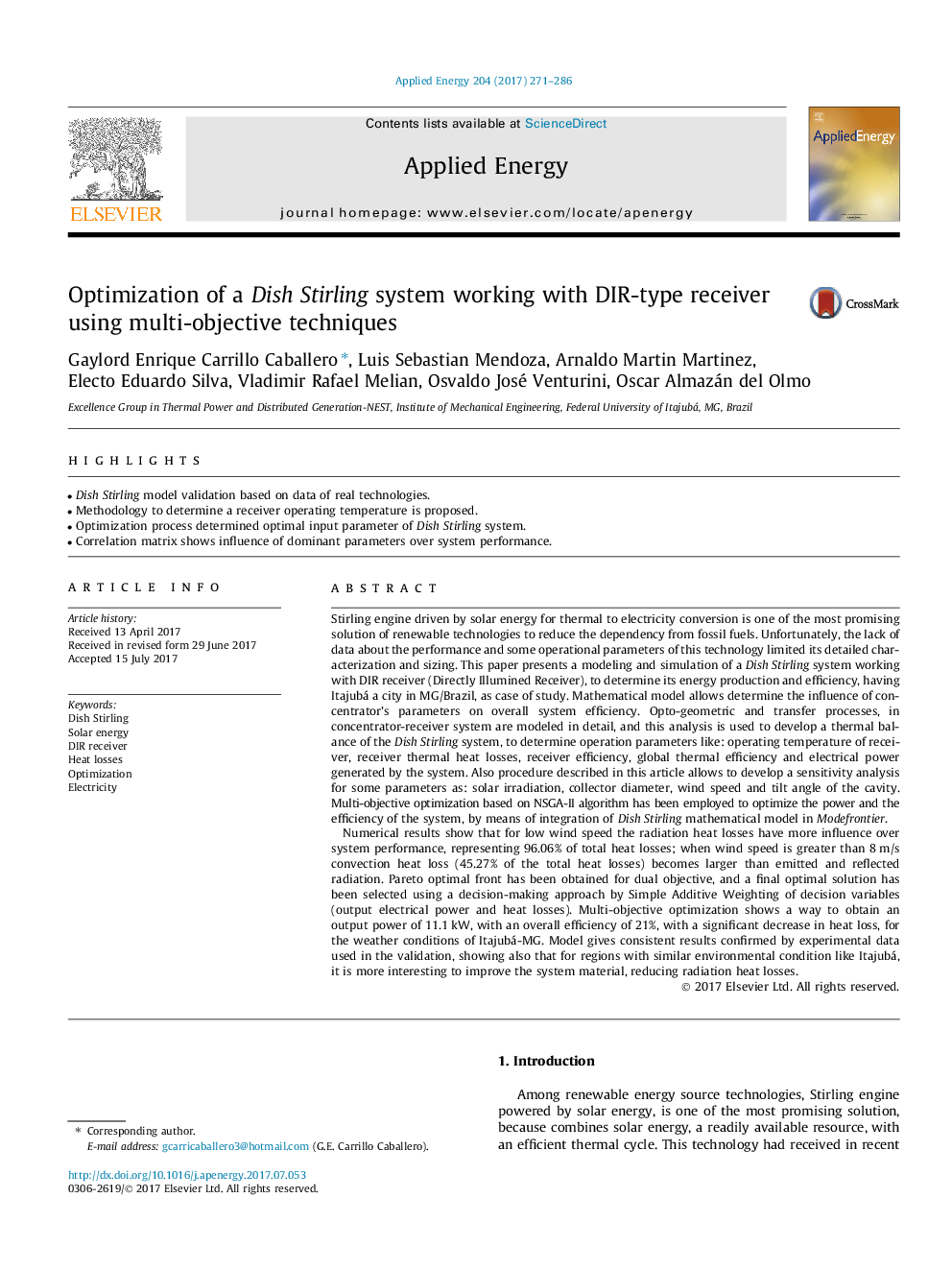| Article ID | Journal | Published Year | Pages | File Type |
|---|---|---|---|---|
| 4916052 | Applied Energy | 2017 | 16 Pages |
Abstract
Numerical results show that for low wind speed the radiation heat losses have more influence over system performance, representing 96.06% of total heat losses; when wind speed is greater than 8Â m/s convection heat loss (45.27% of the total heat losses) becomes larger than emitted and reflected radiation. Pareto optimal front has been obtained for dual objective, and a final optimal solution has been selected using a decision-making approach by Simple Additive Weighting of decision variables (output electrical power and heat losses). Multi-objective optimization shows a way to obtain an output power of 11.1Â kW, with an overall efficiency of 21%, with a significant decrease in heat loss, for the weather conditions of Itajubá-MG. Model gives consistent results confirmed by experimental data used in the validation, showing also that for regions with similar environmental condition like Itajubá, it is more interesting to improve the system material, reducing radiation heat losses.
Related Topics
Physical Sciences and Engineering
Energy
Energy Engineering and Power Technology
Authors
Gaylord Enrique Carrillo Caballero, Luis Sebastian Mendoza, Arnaldo Martin Martinez, Electo Eduardo Silva, Vladimir Rafael Melian, Osvaldo José Venturini, Oscar Almazán del Olmo,
